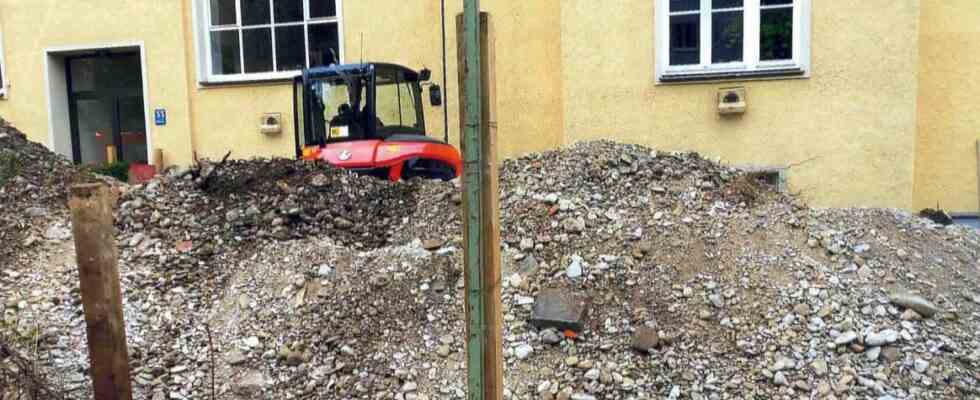For decades there was a stately maple tree at Adalbertstraße 55 in Maxvorstadt. It was felled in early October. “I’m still stunned by this,” says Sabine Meier. She lives in one of the apartments in the yellow house. Her real name is different, but the tenant fears the consequences. The maple was almost 100 years old, she reports, and its felling changed the streetscape. “The horror on the whole of Adalbertstraße is great.”
The maple is one of more than 8,500 trees in Munich for which a felling permit was granted last year. Although more than 7,100 new trees were approved or already planted on private and public land in 2021, more than 1,400 trees were lost. “If you look at the figures for the last few years, we have about 2,000 fewer trees per year,” criticizes Angela Burkhardt-Keller, tree protection expert at Bund Naturschutz (BN). “So we have a steady disappearance of trees in the city.”
The fact that these numbers are recorded has to do with the Munich Tree Protection Ordinance: Anyone who wants to fell a tree whose trunk circumference is at least 80 centimeters at a height of one meter needs a permit. Exceptions to this are hedges and some fruit trees.
The ordinance also stipulates that a replacement tree must be planted. If there is no space for this on the property, a compensation payment of 750 euros is usually required, which goes towards planting trees in public spaces.
For builders, that’s “peanuts,” says Burkhardt-Keller – and no reason to densify in return for the preservation of many trees and shrubs. “Land in Munich is just incredibly expensive – and therefore incredibly valuable.”
Once a magnificent tree: the maple – here as a torso during felling – no longer exists.
(Photo: Private)
The maple tree on Adalbertstraße was also not felled because it was ill. The felling permit was granted “for the basement renovation with external insulation,” explains Ingo Trömer, spokesman for the planning department, to which the tree protection authority belongs. The Maxvorstadt district committee had unanimously spoken out against the felling in April. The committee demanded that the basement wall should be renovated from the inside instead of from the outside.
Whether the basement conversion would have required a permit is being examined
“The basement wall was not even touched,” says resident Sabine Meier. Instead, the windows were enlarged and atriums were laid. Meier suspects that the basement should be converted into expensive living space. “The tree was felled for other reasons,” she suspects. The local building commission is currently checking whether the basement conversion is a change of use that requires approval, says department spokesman Trömer. The owner has not responded to SZ request.
Especially in densely built-up districts such as Maxvorstadt, living space, trade and sports facilities compete for the few free spaces. “So there are not enough tree locations for replacement plantings,” explains Trömer. That’s why the city administration wants to create new tree locations, for example with the “Border Tree Initiative”: If neighbors plant a tree on their common property line, the city pays a large part of the costs.
In addition, according to the will of the planning committee in the city council, all replacement plantings for felled trees should be checked in the future. The committee wants to create new jobs for this, because so far the three employees employed have only been able to inspect 60 percent of the replacement trees on the spot.
“Trees are the Climate factor for our urban living environment,” says Angela Burkhardt-Keller from the BN. They provide shade, they cool and create infiltration areas. The larger the tree, the greater these effects. Burkhardt-Keller therefore not only calls for the tree protection ordinance to be applied to smaller trees and fruit trees to expand and increase compensation payments, but also to preserve large and old trees.
Like the maple in Adalbertstraße, other trees in the city are likely to fare in the coming months – because it is currently the felling season. Many trees and shrubs must not be felled in spring and summer so as not to disturb breeding and nesting birds. That is why the tree workers with their chainsaws come particularly often between October and March.

